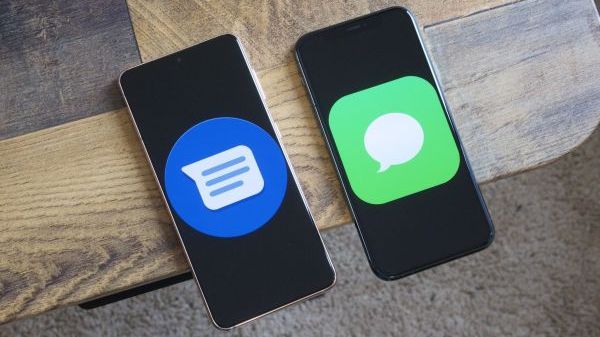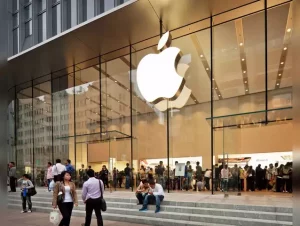- 22 November 2023
- 75
Breaking Down Walls: iPhones and Android Unite with Apple’s RCS Support

Breaking Down Walls: iPhones and Android Unite with Apple’s RCS Support
Introduction
Hi, I’m Fred Wilson, a tech blogger and smartphone enthusiast who has been following the development of RCS for years. RCS stands for Rich Communication Services, and it is a new standard for modern messaging that aims to replace the outdated SMS and MMS protocols. RCS offers a range of features and benefits that make messaging more interactive, secure, and convenient, such as encryption, read receipts, high-quality media sharing, and chat over wifi or cellular data.
RCS has been around for a while, but it has not been widely adopted by the industry until recently. Google has been a major proponent of RCS, and has integrated it into its Messages app for Android devices. Other companies, such as Samsung, Huawei, and Microsoft, have also joined the RCS bandwagon, and have enabled RCS support on their devices and apps. However, there has been one major player missing from the RCS scene: Apple.
Apple has its own proprietary messaging service, iMessage, which is exclusive to iOS and macOS devices. iMessage offers many of the same features as RCS, but it also has some drawbacks. One of the biggest problems is that iMessage is incompatible and fragmented with SMS and MMS when messaging with non-Apple users. This means that iPhone users cannot enjoy the full benefits of iMessage when communicating with Android users, and vice versa. They have to resort to the old-fashioned and limited SMS and MMS, which often result in poor quality, high cost, and frustration. This also creates a sense of division and discrimination among smartphone users, based on the color of their message bubbles: blue for iMessage, and green for SMS/MMS.
That’s why I’m excited to share with you some great news: Apple has announced that it will add RCS support to iOS next year, and it will work alongside iMessage. This means that iPhone and Android users will be able to message each other seamlessly, using the same RCS features and benefits, regardless of their device or platform. This will change the messaging landscape and benefit both iPhone and Android users in many ways.
In this article, I will explore how Apple’s RCS support works, what it means for smartphone enthusiasts, and how it will break down the walls between iPhones and Androids. Let’s get started!
How Apple’s RCS Support Works
Apple has not revealed much details about how it will implement RCS support on iOS, but it has confirmed that it will work alongside iMessage, and not replace it. This means that iPhone users will still be able to use iMessage as their default messaging service, and enjoy its exclusive features, such as Animoji, Memoji, and Apple Pay. However, when they message with non-Apple users, they will be able to use RCS instead of SMS and MMS, and enjoy its features and benefits as well.
RCS offers a range of features and benefits that make messaging more interactive, secure, and convenient, such as:
- Encryption: RCS messages are encrypted end-to-end, which means that only the sender and the receiver can read them, and no one else can intercept or access them. This adds an extra layer of security and privacy to your conversations, and protects you from hackers, scammers, and eavesdroppers.
- Read Receipts: RCS messages show you when the other person has read your message, and when they are typing a reply. This gives you more feedback and assurance that your message has been received and acknowledged, and helps you avoid misunderstandings and confusion.
- High-Quality Media: RCS messages allow you to send and receive high-quality photos, videos, audio, and documents, without any compression or loss of quality. This means that you can share your memories and moments with your friends and family in full resolution and clarity, and enjoy them on any device or screen size.
- Chat over Wifi/Cellular: RCS messages use your internet connection, either wifi or cellular data, to send and receive messages, instead of your carrier’s network. This means that you can message anyone, anywhere, anytime, without any extra cost or limitation, as long as you have an internet connection. This also means that you can message people who are in different countries or regions, without any international fees or charges.
RCS is similar to iMessage in many ways, but it also has some differences. Here is a comparison table that shows the advantages and disadvantages of each messaging service:
| Feature | iMessage | SMS/MMS | RCS |
|---|---|---|---|
| Encryption | Yes | No | Yes |
| Read Receipts | Yes | No | Yes |
| High-Quality Media | Yes | No | Yes |
| Chat over Wifi/Cellular | Yes | No | Yes |
| Cross-Platform Compatibility | No | Yes | Yes |
| Group Chats | Yes | No | Yes |
| Stickers | Yes | No | Yes |
| Location Sharing | Yes | No | Yes |
As you can see, RCS has many advantages over SMS and MMS, and it is also compatible with iMessage. This means that iPhone and Android users will be able to message each other seamlessly, using the same RCS features and benefits, regardless of their device or platform. Here are some examples of how RCS will improve the messaging experience between iPhone and Android users:
- Group Chats: You will be able to create and join group chats with both iPhone and Android users, and use all the RCS features, such as encryption, read receipts, high-quality media, and chat over wifi or cellular. You will also be able to name your group chats, add or remove participants, and mute or leave them at any time. This will make group messaging more fun, easy, and convenient, and help you stay connected with your friends, family, and colleagues.
- Stickers: You will be able to send and receive stickers with both iPhone and Android users, and express yourself more creatively and humorously. You will also be able to access a variety of stickers from different sources, such as Google, Samsung, and Apple, and use them in your conversations. This will make messaging more lively, colorful, and entertaining, and help you convey your emotions and personality.
- Location Sharing: You will be able to share your location with both iPhone and Android users, and let them know where you are and where you are going. You will also be able to request and receive location updates from your contacts, and see their real-time location on a map. This will make messaging more useful, practical, and safe, and help you coordinate your plans and activities.

What Apple’s RCS Support Means for Smartphone Enthusiasts
Apple’s RCS support will have significant implications for smartphone enthusiasts, cross-platform communicators, and tech blog readers. Here are some of the ways that Apple’s RCS support will affect them:
- It will enhance the interoperability and compatibility between iPhones and Androids, and reduce the stigma and discrimination associated with the “green bubble”. iPhone and Android users will no longer have to deal with the frustration and inconvenience of SMS and MMS, and they will be able to enjoy the same messaging features and benefits as iMessage users. This will create a more unified and harmonious messaging ecosystem, and foster a more open and inclusive culture among smartphone users.
- It will create more opportunities for innovation and collaboration in the messaging ecosystem, and foster a more competitive and diverse market. Apple’s RCS support will encourage other companies and developers to join the RCS movement, and to create new and improved messaging apps and services that leverage the RCS features and benefits. This will result in more choices and options for smartphone users, and more challenges and incentives for the industry.
- It will address some of the challenges and limitations of RCS, such as privacy, security, and carrier support. Apple’s RCS support will increase the demand and awareness of RCS, and push the carriers and regulators to provide more support and protection for RCS users. This will improve the quality and reliability of RCS, and ensure that RCS users have a smooth and secure messaging experience.
Tips and Advice on How to Prepare for the Transition to RCS
If you are excited about Apple’s RCS support, and want to prepare for the transition to RCS, here are some tips and advice that you can follow:
- Update your iOS device to the latest version, and make sure that you have the Messages app installed and enabled. Apple will likely roll out RCS support as part of an iOS update, and you will need the Messages app to use RCS.
- Check your carrier’s RCS support and availability, and make sure that you have a compatible plan and device. RCS requires carrier support and activation, and not all carriers and devices support RCS. You can check your carrier’s RCS support and availability on their website or by contacting their customer service.
- Inform your contacts about RCS, and encourage them to use it as well. RCS works best when both parties use it, and you will be able to enjoy all the RCS features and benefits only when you message with other RCS users. You can inform your contacts about RCS by sending them a link to this article, or by explaining to them what RCS is and how it works.
Conclusion
In this article, I have explored how Apple’s RCS support works, what it means for smartphone enthusiasts, and how it will break down the walls between iPhones and Androids. Apple’s RCS support will improve cross-platform messaging between iPhones and Androids, and offer a range of features and benefits that make messaging more interactive, secure, and convenient. Apple’s RCS support will also enhance the interoperability and compatibility between iPhones and Androids, create more opportunities for innovation and collaboration in the messaging ecosystem, and address some of the challenges and limitations of RCS. Apple’s RCS support will mark a new era of messaging, and bring iPhone and Android users closer together. I hope you have enjoyed this article, and learned something new and useful. If you have any questions, comments, or feedback, please feel free to share them with me. I would love to hear from you, and continue this conversation.

